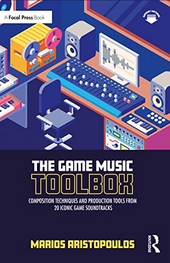The Game Music Toolbox : Composition Techniques and Production Tools From 20 Iconic Game Soundtracks

Ficha básica
Clasificación temática
Otros campos
SUMARIO. Introduction: 15 questions on game composition / 1. Space Invaders (1978): Mickey mousing, programmable sound generators, and the birth of interactive game music / 2. Ballblazer (1985): algorithmic guitar solos to infinity! / 3. The Legend of Zelda (1986): music sequences, musical SFX, and the SNES sound / 4. Amegas (1987): the birth of the tracker sequencer / 5. The Secret of Monkey Island (1990): the secrets of Pirate Reggae! / 6. Street Fighter II (1991): melodic tension in Guile's Ken's and Blanka's themes / 7. Mortal Kombat (1992): from the arcades to the dance floor, formulaic writing makes a classic hit / 8. Diable (1996): chromatic chords and non-functional harmony in Tristram Village / 9. Assassin's Creed: music as a time travelling device in four historical games of the franchise / 10. Journey (2012): a masterclass in monothematic scoring / 11. The Last of Us (2013): when less is more space and silence as storytelling devices / 12. Alien Isolation (2014): in space none can hear you scream controlling tension with a vertical layers system / 13. Mario Kart 8 (2014): music as an information device / 14. Apotheon (2016): recombinant cells a generative technique for producing musical variation / 15. No Man's Sky (2016): a conversation with the audio director Paul Weir / 16. Doom (2016): The Doom Instrument using FX chains creatively / 17. Call of Duty: WWII (2017): a conversation with the composer Wilbert Roget, II / 18. Shadow of the Tomb Raider (2018): music as meditation, lost instruments, and 3D mixing / 19. Control (2019): a conversation with the composer Petri Alanko / 20. Cyberpunk 2077 (2021): diegetic music in Night City, riff-based composition, and the sound of sci-fi.
